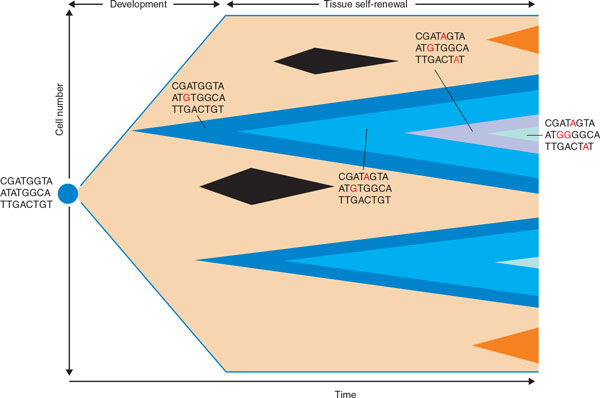Figure 1.

A schematic representation of the effects of somatic mutations at different phases of development and tissue renewal. Life starts from a single cell, a fertilized egg (blue circle). A complete organism, that is a human, is formed from this cell by many cell divisions. Novel somatic mutations can occur with each cell division. The diagram shows how such mutations are passed on to daughter cells as the organism develops: a mutation may undergo clonal expansion during tissue renewal. If the somatic mutation occurs late (brown clones), the mutation will be found in only a small compartment of the body, that is, it is likely to be confined to one organ. If the mutation occurs very early in development - for example, during embryogenesis (dark blue clones) - it is likely to occur in different organs. Successive mutations, which can then establish organismal cell lineage trees, can occur in cells derived from those that underwent an early mutation (clones in lighter blue color within the dark blue clone). The serial acquisition of novel mutations is shown as an example for the first series of blue clones (red bases). Some mutations may be disadvantageous and go extinct (black clones). (Image adapted in part from [6].)
